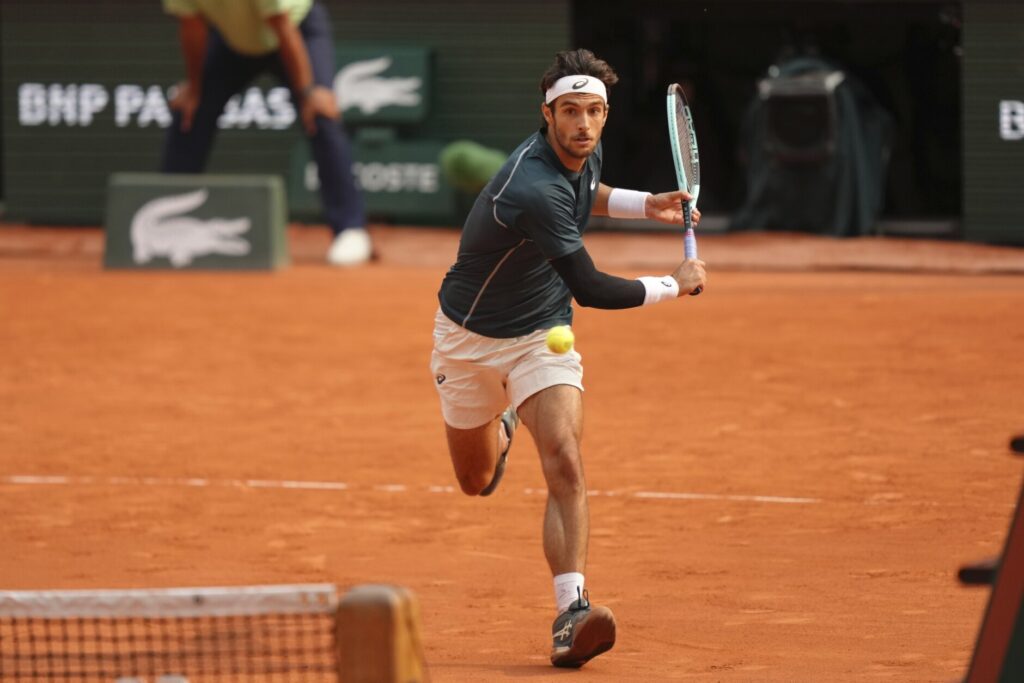The most striking moment in the 2024 psychosexual tennis film Challengers isn’t the knee injury, the quasi-sex scenes, or even the final passionate rally. It’s the revelation that the character Art Donaldson, an American ATP player, has won the French Open twice a feat so alien to real-life US men’s tennis that it almost feels like fantasy.
In reality, no American man has won the French Open or even reached the semi-finals since Andre Agassi’s run in 1999. In fact, no American man had made the quarter-finals there since Agassi in 2003, until recent breakthroughs this year. American women, on the other hand, have thrived on Parisian clay. Legends like Chris Evert with seven titles and an astounding 125-match winning streak, Serena Williams with three championships, and current stars like Coco Gauff regularly making deep runs, show a stark contrast. The men’s record, outside of a brief prosperous period in the 1980s and 1990s, has been one of struggle and disappointment on the slow, demanding surface.
This 21st-century disconnect between American men and the French Open is more fraught than even the complicated relationships portrayed in Challengers. However, this year showed signs of thawing. Tommy Paul and Frances Tiafoe broke the 22-year quarter-final drought for American men. Tiafoe, who had not been known for his clay prowess, displayed remarkable form, not dropping a set until his exit. Paul fought through injuries and tough matches to reach the last eight, showing grit and determination despite lacking the raw power typical of many top clay players.
Other Americans showed promise as well. Ben Shelton pushed the defending champion Carlos Alcaraz to four sets, and Ethan Quinn made it to the third round, earning respect as emerging talents.
While no one replicated Art Donaldson’s mythical success, there’s cautious optimism. Yet, the runs ended abruptly, highlighting the gap in class and experience on clay. Paul’s physical issues worsened, leaving him vulnerable to Alcaraz’s ruthless attack, losing 6-0, 6-1, 6-4. Tiafoe battled Lorenzo Musetti, a natural clay-courter, before succumbing in four sets. His performance was respectable but ultimately exposed the challenge American men still face on this surface.
These matches exemplified the demands of clay-court tennis slower rallies, tactical precision, and endurance. A longtime tennis analyst remarked that while Tiafoe had not lost a set until meeting Musetti, he hadn’t faced a truly elite clay specialist who could force him into extended, punishing rallies. When asked about Paul’s chances against Alcaraz, the expert was skeptical, underscoring the difficulty American men face against top-tier clay-court players.
An early rally between Paul and Alcaraz showcased some of Paul’s best groundstrokes, with him pushing Alcaraz around the court. But Alcaraz’s explosive forehand down the line a shot out of Paul’s reach served as a reminder of the physical gifts elite players possess. Such natural power and precision are not easily learned or replicated.
Even if Tiafoe or Paul had made it to the final, world No. 1 Jannik Sinner would likely have been their opponent. Sinner, known for his heavy, accurate hitting, is a formidable barrier, perhaps even more daunting than Alcaraz. The analyst speculated that the Americans would likely have lost to Sinner, reflecting the high hurdle still standing between American men and French Open glory.
Since the decline of the “Big Three” Federer, Nadal, and Djokovic tennis has been viewed as more open and competitive. Tiafoe expressed optimism, suggesting anyone could win slams. Yet, reality paints a different picture. Sinner and Alcaraz have dominated the last five majors and appear poised to rule men’s tennis for the foreseeable future, challenging Tiafoe’s hopeful outlook.
Paul and Tiafoe’s performances represent the best recent American efforts at Roland-Garros. Looking ahead, the question remains: can American men reclaim success on clay? The talent pool is deep, but the barrier imposed by generational prodigies like Alcaraz and Sinner is immense. Still, with persistence and development, it’s possible the United States, with its vast population and resources, might one day produce another male French Open champion. Until that day, fans should appreciate the monumental challenge the surface poses and respect the efforts of those striving to overcome it.

